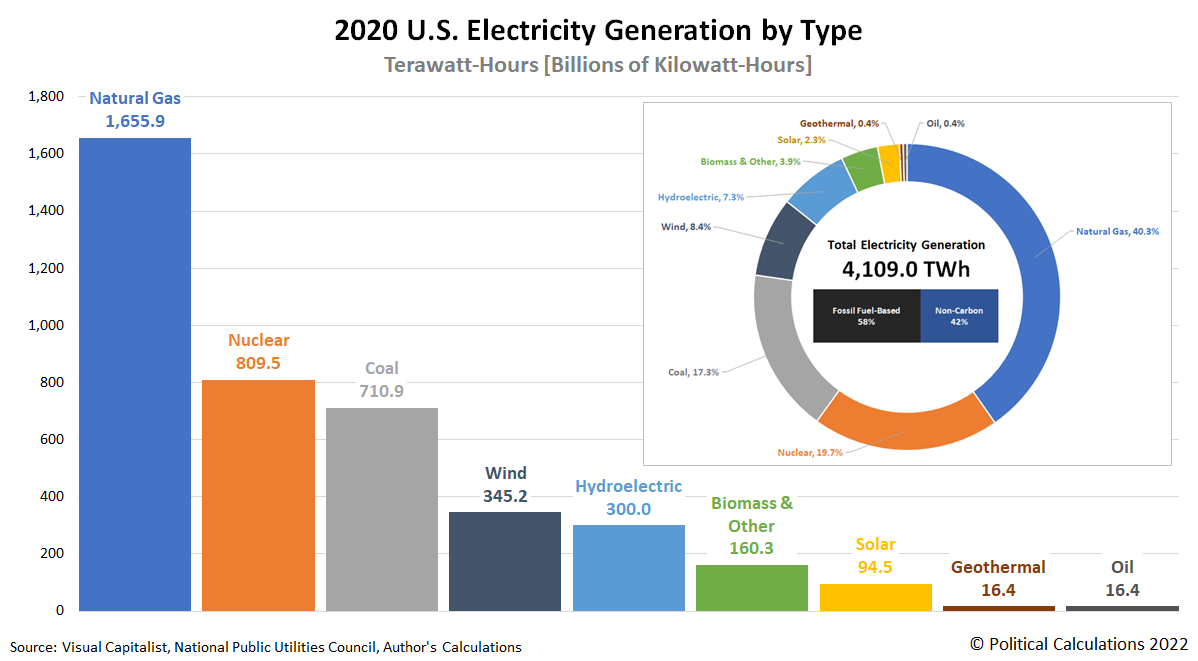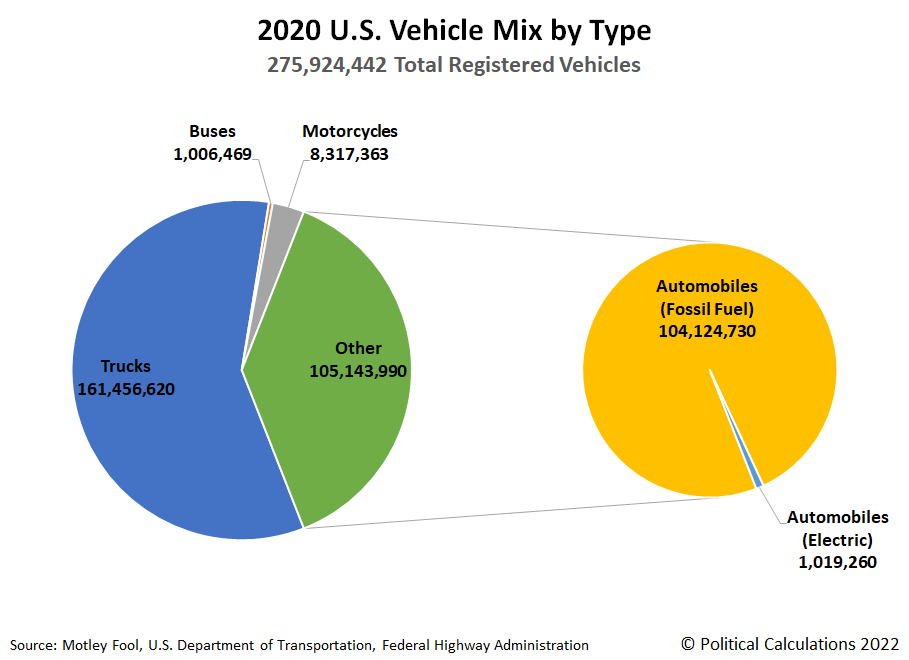How much more electricity generation capacity needs to be added to the U.S. power grid to fuel a complete conversion electric cars?
Last week, we took on the personal finance question of whether a petroleum or electric-powered vehicle is the better buy, but we didn't stop to consider where that electricity comes from. The following chart shows the mix of sources that Americans used to power the U.S. economy with 4,109 terawatt-hours (TWh), or 4,109 billion kilowatt-hours (kWh), in 2020.
The most important thing to recognize about this chart is that only an exceptionally small fraction of all that power generated actually goes to charge up electric-powered vehicles. Nearly all of that generated electricity is used instead for other purposes, which means that if Americans are to fully switch over to electric vehicles, the country needs to significantly boost its electric generation capacity to provide the juice they will need to run.
So how many cars are we talking about? For a visual frame of reference, the next chart shows how tiny the share of electric vehicles was in 2020. (For simplicity, we've grouped all electric vehicles into the Automobiles category).
From here, we just need to know that the average electric vehicle consumes 34.6 kilowatt-hours (kWh) of electricity to travel 100 miles, and we can run some back-of-the-envelope numbers to find out how much more electricity generation capacity will be needed to avoid things that would lower the quality of life for Americans or harm the economy, like rolling blackouts.
We built a tool to do the math. If you're accessing this tool on a site that republishes our RSS news feed, please click through to our site to access a working version.
For our default data, we find that the U.S. power grid will need to expand its capacity by 583.0 TWh per year to accommodate the power needs of 104,124,090 electric vehicles. Today, that additional needed electricity generation capacity is missing from the United States' power grid.
This result assumes the new electricity generation capacity comes from nuclear energy, which according to the U.S. Energy Information Administration, is the most reliable source of electricity. Of course, there are other ways to generate electricity, for which you can substitute the EIA's indicated capacity factors for those other sources in our tool.
As you'll find, your choice of how that electricity is generated has a huge impact on how much more electricity generation capacity will be needed just to power electric vehicles.
References
Daly, Lyle. How Many Cars Are in the U.S.? Car Ownership Statistics 2022. Motley Fool. [Online Article]. 18 May 2022.
International Energy Agency (IEA). Electric Vehicles. [Online Report]. November 2021. Accessed 10 September 2022.
U.S. Department of Energy Office of Nuclear Energy. What Is Generation Capacity? [Online Article]. 1 May 2020.
Wallach, Omri. Road to Decarbonization: The United States Electricity Mix. Visual Capitalist. [Online Article]. 31 August 2021.
Labels: environment, tool
Welcome to the blogosphere's toolchest! Here, unlike other blogs dedicated to analyzing current events, we create easy-to-use, simple tools to do the math related to them so you can get in on the action too! If you would like to learn more about these tools, or if you would like to contribute ideas to develop for this blog, please e-mail us at:
ironman at politicalcalculations
Thanks in advance!
Closing values for previous trading day.
This site is primarily powered by:
CSS Validation
RSS Site Feed
JavaScript
The tools on this site are built using JavaScript. If you would like to learn more, one of the best free resources on the web is available at W3Schools.com.


